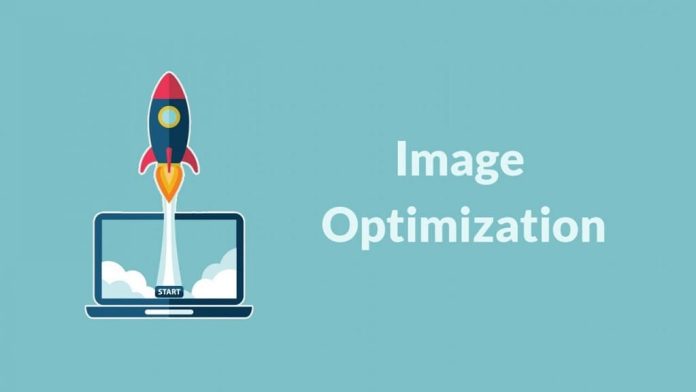Image optimization is the process of reducing the file size of images to improve website performance. Large, unoptimized images can significantly slow down website load times and harm the user experience. By optimizing images, websites can load faster, use less data, and provide a better experience for visitors. This comprehensive guide covers everything you need to know about optimizing images for the web.
Why Image Optimization Matters
There are several important reasons why image optimization is critical for modern websites:
- Faster Page Load Times – Unoptimized images load slowly and make pages feel sluggish. Compressing images results in much faster load times.
- Better User Experience – Slow websites frustrate users and lead to higher bounce rates. Optimized images improve conversions and satisfaction.
- Reduced Hosting Costs – Smaller image file sizes use less bandwidth and can significantly cut monthly hosting bills.
- Improved SEO – Fast load times boost search engine rankings. Image optimization is an easy SEO win.
- Less Data Usage – Visitors may avoid sites that eat up their expensive mobile data. Shrinking images reduces mobile data usage.
The Basics of Image Formats
Before optimizing images, it helps to understand the most common image file formats used on the web:
- JPEG – Best for photos. Uses lossy compression. Wide browser support.
- PNG – Supports transparency. Lossless compression. Good for logos and illustrations.
- GIF – Animations and basic images. Limited colors. Very small file sizes.
- WEBP – Newer format with advanced compression abilities. Limited browser support.
Each format has advantages and disadvantages to consider when optimizing images. The goal is to select the most appropriate format and compression level for each image.
Best Practices for Image Optimization
Here are the most important best practices to follow when preparing images for your website:
Resize Images
Properly Images should be resized to match the exact dimensions they will be displayed on web pages. Avoid scaling images up or down with HTML/CSS. Simply shrinking images to the display size dramatically reduces file size while maintaining quality.
Choose the Right Image Format
Evaluate images and select the most suitable format – JPEG, PNG, or GIF. Use tools to see which offers the best results for each specific image. Don’t convert images to formats not intended for their type.
Find the Optimal Compression Level
Compression reduces file size through lossy or lossless techniques depending on the image format. Test different compression levels to make images as small as possible before quality becomes unacceptable.
Remove Unnecessary Image Metadata
Hidden metadata, like geotags and camera settings, inflate file sizes. Use tools to strip this excess data without affecting image quality.
Serve Scaled Image Copies
Resize and compress images for screen sizes like desktops, tablets, and mobile phones. Serving properly scaled images enhances performance across devices.
Enable Browser Caching
Set caching headers so images are stored locally on devices and reused instead of being re-downloaded each page visit. This accelerates repeat site visits.
Follow a Structured Optimization Process
Manually checking and tweaking individual images is hugely time-consuming—Automate optimization tasks with tools to streamline the process at scale.
How to Check Current Image Optimization Levels?
To optimize images, you first need to audit current images to check optimization levels. Here are a few easy ways to evaluate images:
View Image File Sizes
Sort images from your media library by file size to easily identify large, unoptimized images that should be prioritized.
Examine HTML Image Tags
Inspect the width and height attributes of IMG tags. Images displayed larger than their native dimensions result in reduced quality and performance.
Check Page Load Times
Use website speed tests before and after optimizing batches of images to measure the performance gains achieved.
Compare Image Formats
For key images like your logo, save copies in different formats like JPEG and PNG to see which results in the smallest size.
Thoroughly Auditing Images Manually
While the methods above provide a high-level view, thoroughly auditing images requires digging into the details of each file. Follow these steps:
- Record image locations and filenames in a spreadsheet for tracking purposes.
- Note current widths, heights, and file sizes.
- View each image and evaluate visual quality as a baseline.
- Check metadata for unnecessary bloat-inflating file sizes.
- Convert copies of images to different formats.
- Compress copies of images at different levels.
- Compare visual quality and file sizes to find the optimal balance.
This comprehensive audit should be performed selectively on priority images identified in the initial assessment. Auditing every image on a website is often needlessly time-consuming.
Tools for Batch Image Optimization
Manually optimizing anything more than a few images at a time is impractical. Luckily there are excellent tools available to automate optimization:
- ShortPixel – Top plugin to compress images integrated with WordPress. Easy to use and very affordable.
- TinyPNG – Web interface to compress JPEGs and PNGs. Simple with a generous free tier.
- ImageOptim – Powerful paid Mac application with batch processing capabilities.
These tools analyze images using algorithms and testing to apply the best possible optimizations automatically. This saves enormous amounts of time compared to tedious manual methods.
Most web hosts also include basic image optimization features directly in their management consoles. While convenient, the results may not be as thorough.
When to Re-Optimize Images
Getting images fully optimized is an important first step. However, maintaining optimization is an ongoing process to account for changes over time:
- New Images Added – As new images get uploaded, they need to be optimized.
- Format Improvements – Better lossy and lossless compression algorithms are always emerging.
- Faster Connections – What was once “good enough” may now be unnecessarily large.
- Design Changes – New layouts, color schemes, branding, and templates may require updated image sizes and formats tailored for the new design. Periodically re-evaluating images ensures they match website needs as they evolve.
By continually monitoring images and re-optimizing when appropriate, sites can offer the best performance to visitors over time.
APIs Optimization
APIs make calling advanced image processing functions as easy as a single line of code. Dynamically optimize, resize, compress, and convert images via API instead of complex client-side logic.
As web performance expectations and capabilities advance, staying on top of the latest image optimization techniques is key to delivering excellence.
Conclusion
Optimizing images for speed, responsiveness, and visual quality is crucial for modern website performance. By following best practices and leveraging automation tools, images can be made as lean and fast as possible to please visitors and search engines alike. Paying attention to ongoing optimization as part of regular web operations results in some of the “easiest” performance gains available.








